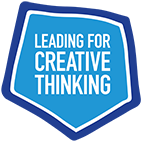Using students’ experiences to develop more creative schools
Harris, A. (2016). Creativity and Education. London/New York: Palgrave Macmillan.
Ginns, P., Freebody, K., Anderson, M., & O'Connor, P. (2021). Student experience of creativity in Australian high school classrooms: A componential model. Learning and Individual Differences, 91, 102057.
Read the whole article here.
Summary
In 2016 research by Dan Harris developed a comprehensive list of young people’s creative skills and dispositions through a study of secondary schools in Australia. Subsequently researchers at the University of Sydney and the University of Auckland have developed a unique model for understanding students’ experience of creative school environments - the Creative Schools Index (CSI).
The CSI focuses on 11 skills/dispositions:
- Collaboration - working in a group of two or more to develop shared understandings and achieve shared goals.
- Problem solving - identifying and articulating problems and devising strategies for their solutions and/or management considering consequences and outcomes.
- Critical thinking - investigating the wider social and cultural context of ideas.
- Playfulness - using imagination to create made up worlds and situations.
- Environment - using it physically, emotionally and intellectually, and adapting to a diversity of classroom-based activities.
- Divergent thinking - thinking differently about known problems.
- Innovation - realising creative ideas in tangible ways.
- Discipline knowledge - developing expertise in a domain of knowledge that involves specialised content and process understandings.
- Risk-taking - Being supported when trialling unconventional or previously unconsidered approaches.
- Synthesis - Connecting ideas to develop new understandings or approaches.
- Curiosity - Showing a desire to explore, examine and understand how things are and how things work.
While each of the above refers to a skill or disposition it also indicates the kind of environment that might cultivate these skills.
Schools interested in using the CSI index get their students to take a 64 item questionnaire which is analysed by the University of Auckland.
Here are some examples of the kinds of questions students are asked include:
In our class/es…
Collaboration
…students get to work with each other.
…students learn from working together, not just from the teacher.
…we are encouraged to discuss ideas.
…collaboration is a common way of working.
Problem-Solving
…problems are used to make us think more deeply.
…we are learning to ask questions as well as answer them.
…we use different ways to solve problems.
…we are encouraged to think of different solutions to problems.
Critical Thinking
…we are learning to use evidence to support our ideas.
…we discuss strengths and weaknesses of different ideas.
…we are learning to make up our own minds, not just accept what we are told.
…we are encouraged to challenge our teacher's ideas.
Playfulness
…learning is often playful.
…we have fun when we are learning.
…we get to try out new ideas.
…we use humour and jokes in our learning.
The school then receives a detailed report outlining the perceptions of their students and benchmarking this against other schools which have participated. The report provides schools with robust data that measures their overall creative environment and suggests ways in which classroom pedagogy might shift across eleven dimensions of creativity.
Marley's Sunshine School took part in the CSI process in 2019 and its report can be accessed here.
You can explore more information about the CSI approach here.
Reflecting Together
1. How do the 11 CSI skills/dispositions chime with your school’s model of creativity?
2. How creative do you think your school environment(s) is (are)? What evidence do you have for this?
3. As a leader how could you engage students and invite their opinions to help you further develop creativity in your school?
4. What could you learn and apply from the CSI materials?
